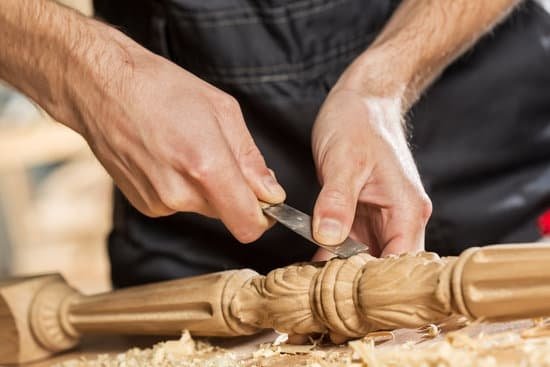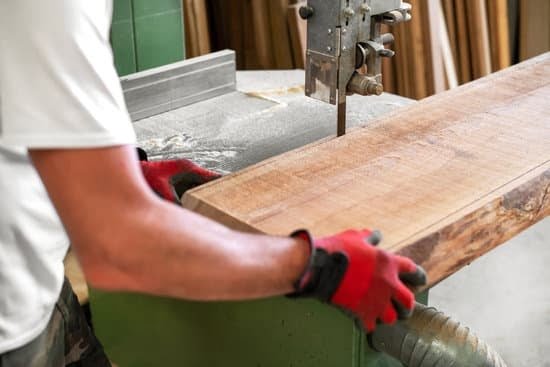Introduction to DIY Dust Collection Systems
Wood dust is composed of tiny particles of wood. These particles, which can range in size from larger particles that are visible to the naked eye to microscopic pieces, are created when wood is processed or worked on with machines like saws, sanders, routers and more. Wood dust can contain silica, which is known to have adverse effects on human health if inhaled over a prolonged period of time. Exposure to large amounts of wooden particles can also cause serious respiratory problems for those affected.
In order to mitigate these potential health risks, DIY dust collection systems have been developed. Dust collection systems involve placing a mechanized dust collector, such as vacuum cleaners that are specifically designed for collecting dust, near the work surfaces where dust would be generated. This allows the general area to be free of airborne particulates and any excess dust goes directly into the system and is prevented from becoming suspended in the air. Additionally, DIY projects usually require using many materials to complete them and having a good dust collection system will reduce how much fine debris gets created or spread around during assembly or painting processes etc.
Overall having a proper dust collection system will ensure that your workplace or shop remains clean and healthy while making projects easier and faster by not letting debris etc interfere with working on/assembling project. Also given how some components might create toxic fumes incorrect ventilation could present an even bigger health risk than direct inhalation of wood particulates alone so planning ahead and investing in proper equipment early on can help save both money in the longterm as well as ensuring everyone’s safety when working with hazardous materials like paints etc too.
Necessary Tools and Materials
Tools:
Table saw, circular saw, miter saw, jig saw, bandsaw, jointer, planer, router table and other stationary power tools. Safety glasses are highly recommended while working on a diy dust collection system.
Materials: High quality filter bags, flexible hose tubing for venting the dust collector filter cartridge to the machine, galvanized sheet metal ducting for connecting ductwork from power tools to the dust collection unit, electrical tape for sealing any joints and hardware such as clamps or screws for mounting hardware on walls or ceilings.
Settings: Setting up your dust collection system depends on the specific characteristics of your shop/home environment. In most cases it is recommended to mount the dust collector filter cartridge at least 8 feet above ground level to avoid any accumulation of collected particulate. Secondly establish baseline settings with regard to air speed within the vents and inlet ports of the machines you’re connecting the dust collection unit to. This will help ensure proper operation under normal conditions. Lastly test your set up frequently with both your eye and sound meter to make sure there are no air flow restrictions causing an unsafe situation.
Step-by-Step Analysis and Guidelines for Setting Up
Calculating CFM: Calculating cubic feet of air per minute (CFM) is an important aspect when setting up a dust collection system for woodworking. This figure will help determine the size of your blower, the amount of suction required by your tools and accessories, and pipe size. To determine the CFM you will need to calculate the total area of all the parts that need extraction, including the hose and ductwork. Once this is established, divide it by 7 (the accepted rate for CFM).
Determining Pipe Sizing: Measuring the pipes is vital in setting up a dust collection system for woodworking as it helps to optimise suction power while keeping operating costs low. The most efficient sizes are 4” or 6” pipes; however these must be determined depending on whether your extractor requires high static pressure or low static pressure respectively.
Choosing The Right Filter For The Job: It’s equally vital to choose the right filter when setting up a dust collection system for woodworking. Ensure that it has enough strength to handle fine particles; furthermore ensure its capable of capturing 99% of the airborne particles in your shop. If unsure, consult a professional to ensure an appropriate choice is made.
Dust Collection Accessories: Adding various accessories such as blast gates, blast tee fittings or Y Connectors can help optimise airflow in effective areas due to wide range of interchangeable pieces that can help direct suction needed for specific tools or processes. Additionally this helps reduce backpressure thus squeezing out extra efficiency from each machine wherever possible.
Maintenance and Troubleshooting Tips
Regularly replacing filters and accessories: Doing this regularly ensures that your dust collection system is working correctly and efficiently. It is recommended to replace the filter after each project, as they can build up dust quickly and then not provide enough suction power to your equipment. Also, check for any clogs or leaks in the hoses and confirm that all accessory components are securely attached.
Ways to improve dust collection: Consider investing in an air filtration system that can reduce airborne particles, such as fine sawdust. Additionally, there are various devices you can buy that create a vacuum-seal around the lid of yourDust Collection Systems Woodworking machine which greatly reduces the amount of fine sawdust escaping into the air.
Common problems and solutions: A common problem experienced when using a dust collection system is inadequate suction power due to clogged hoses or filters. The best solution is to replace these components consistently so that adequate pressure is maintained in order to effectively capture debris. Additionally, make sure your hoses are properly connected at both ends and check for any blockage or buildup in crevices or tight spaces where airflow may be prevented.
Final Thoughts
Dust collection systems are an effective tool for woodworkers to maintain a safe and healthy work environment. When woodworking, fine dust particles can be spread throughout the air in an unsafe manner, potentially causing respiratory issues or other health problems. A DIY dust collection system utilizes an attachment for the power tool and a dust collector, typically connected with vacuum hoses, to capture dust particles produced during cutting or sanding of different materials. A DIY system allows the flexibility of customizing according to individual preferences and needs with less cost compared to store-bought models.
When installing and using a DIY dust collection system, certain safety precautions must be taken such as wearing protective clothing and equipment, avoiding sharp edges on ducts, checking that all components are properly secured and not at risk of breaking off due to vibrations or impacts. For larger projects requiring more suction there are wall-mounted options available which connect directly into the home’s electrical system. Additionally, some DIY systems come equipped with adequate filters which help prevent releasing pollutants in the surrounding air. Dust collectors should be regularly cleaned or replaced depending on their use level; filter replacements should also be reviewed periodically as wear and tear may reduce their efficiency over time. Finally, it is essential for woodworkers never leave the area until all dust accumulation has been removed from surfaces within handreach as well as from floors, ceilings and walls.

Hi everyone! I’m a woodworker and blogger, and this is my woodworking blog. In my blog, I share tips and tricks for woodworkers of all skill levels, as well as project ideas that you can try yourself.





